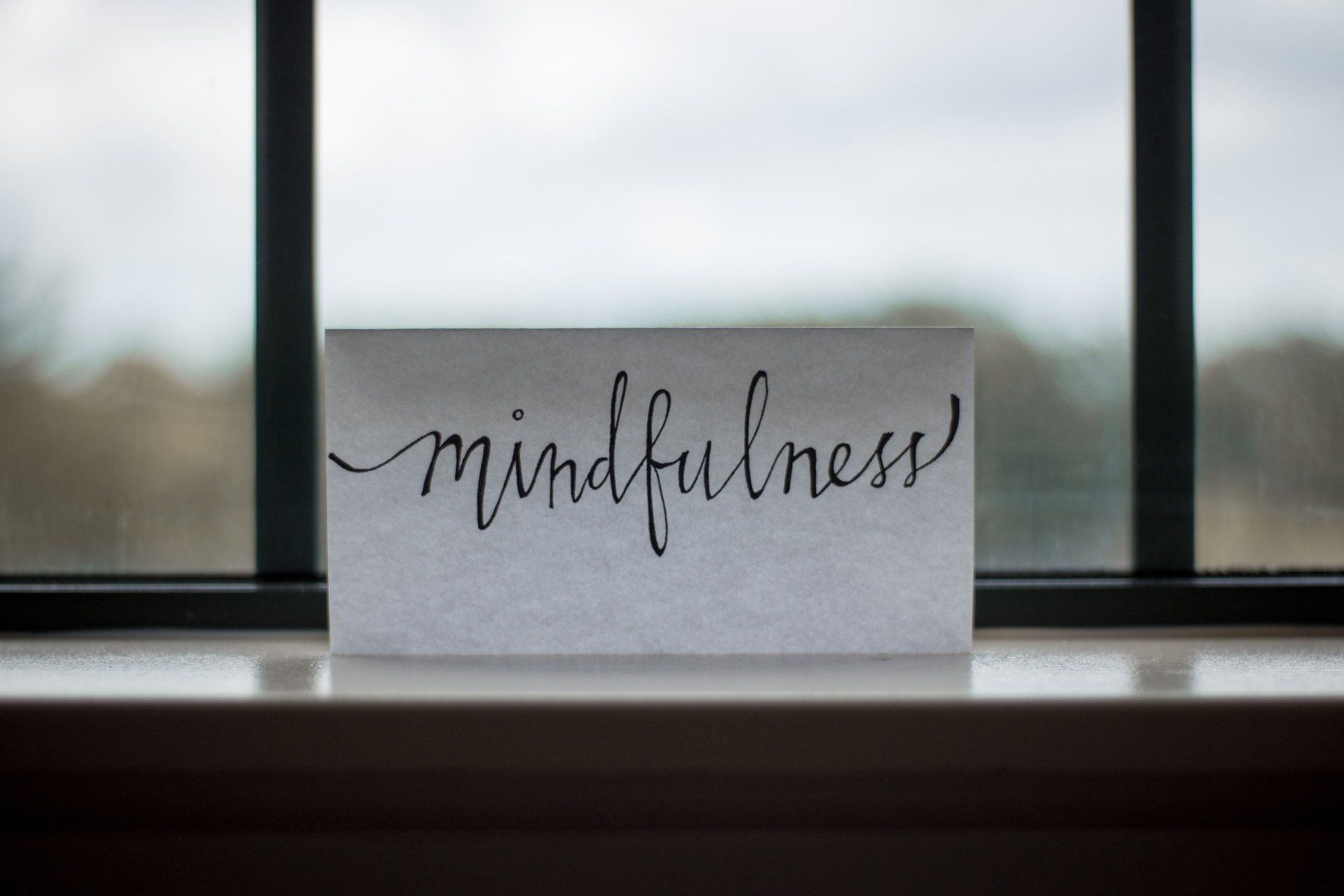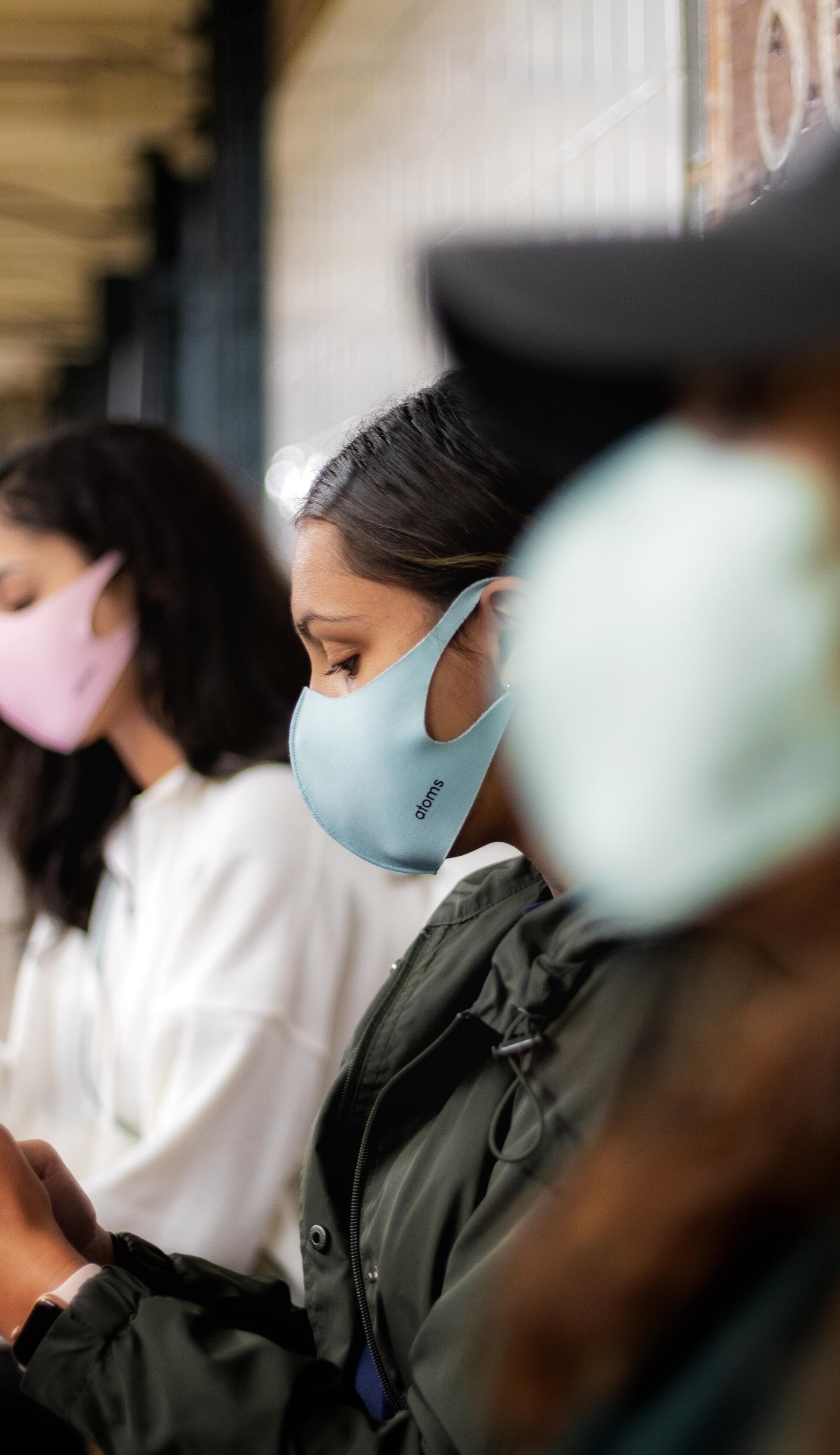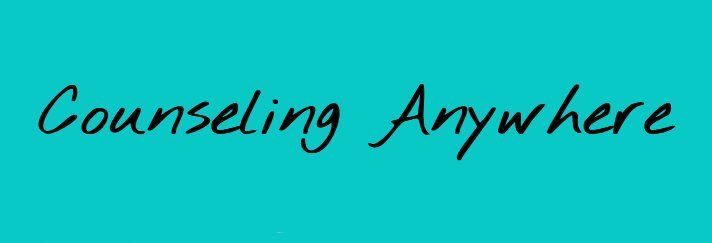How to Use Mindfulness to Strengthen Your Relationships
Gillian Florence Sanger • February 17, 2020
No matter how far you’ve come in your intimate relationship, cultivating love, intimacy, and union is an ongoing process. As mindfulness is the ever-unfolding compassionate, non-judgmental awareness of each and every moment, mindfulness practice and relationships go hand-in-hand. As your relationship evolves, so too does one’s mindfulness practice, both blossoming to enhance your sense of happiness, love, and equanimity.
Every interaction between you and your partner is an opportunity for mutual appreciation and togetherness. However, when tensions are high and one or both partners are not mindful of their emotions, their words, and their energy, their interactions promote the opposite of togetherness, weakening the trust, connection, and deep intimacy you both yearn for.
To strengthen your relationships in meaningful and sustainable ways, a degree of mindfulness is required. The more mindful you are of yourself and your partner, the better. Yet still, no matter how versed or unversed you are in the art of present moment awareness, your sincere efforts to explore the present moment go a long way in bringing you and your partner closer.
There are numerous ways that mindfulness can enhance your relationships. From improving emotional regulation to enhancing gratitude, the skill of remaining open and receptive to the present moment has deep implications for your relationships. These are just some of the ways that mindfulness practice has this transformative effect.
Mindfulness can help you to better navigate emotions—both yours and theirs.
When you become more mindful of your emotional landscape, self-awareness increases and you experience an increase in your ability to moderate your responses. This does not mean that you negate or deny what you are feeling. It simply means you become a clearer witness of your emotions, better able to soften your responses where it is appropriate to do so.
One of the suggested mechanisms through which this occurs is through mindfulness’s ability to promote executive control. Mindfulness increases your sensitivity to your experience, which helps you to understand and respond in new ways.
But what does this have to do with relationships? As you can understand when you are the receiver of your partner’s emotions, the way an emotion is expressed impacts your ability to receive it with love. When someone lashes out, for instance, the body’s response is to defend or pull away, neither of which promotes togetherness or healing.
By becoming more attuned to your emotions, you start to express yourself in ways that embody both raw honesty and compassion. This sets the stage for how a difficult conversation with your partner will play out.
So, when emotions are running high and impacting your interactions with your partner, you can:
Turn towards the emotion.
Your instinct might be to turn away from challenging emotions as they arise (whether within yourself or your partner). However, Gottman’s principle of “turning towards instead of away” exemplifies a more mindful approach you might take when you or your partner is experiencing a strong emotion.
If you are experiencing a strong emotion, you can turn towards it by taking a few deep breaths, softening the mind, and paying attention to the sensations and stories that are moving through us. After a few moments, you might try to express yourself in a new way. It can be helpful to focus on your own needs, hopes, and desires, rather than expressing the other’s wrongdoings.
If your partner is the one experiencing a strong emotion, you can become mindful of your own instincts to defend, to turn away from, or to invalidate. Instead, you can take a few deep breaths through the heart and encourage a mutual, thoughtful exploration of what is present.
Create space between yourself and this wave of energy.
When an emotion is present, you can create a bit of distance between it and yourself. If you are the one feeling emotional, you can mindfully acknowledge the feelings that are present, removing the sense of ‘I’ from your observations. So, rather than noting ‘I am furious’, you would simply note ‘anger’, tuning into the physiological expressions of this emotion as well.
If your partner is the one experiencing the strong emotion, you can compassionately remind yourself that you do not have to swim in the same waters. You can be more like the steady rock beneath the waves that are moving, helping your partner to mindfully inquire about and express what is there.
Mindfulness practice helps to shift unconscious behaviors that impact your relationships.
Since many of your behaviors and responses in relationships are conditioned and habitual, shifting them in positive ways takes more than conscious effort. Mindfulness practice helps to make these shifts.
First, mindfulness increases your awareness of your habitual behaviors. You begin to recognize, through mindfulness exercises, that your thoughts and feelings do not truly belong to you. Instead, they are waves of energy that move through you in one way or another for a multitude of reasons. Your conditioned beliefs and your personal history largely define how you respond in various circumstances. As you become more aware of this, you become empowered to shift your responses – or to at least catch them after they have risen.
Second, research shows that mindfulness training shifts neural circuits in both structural and functional ways. These shifts change your brain’s automatic responses to events. In other words, your brain literally rewires to adopt new ways of responding.
This adjustment in your automatic responses impacts your ability to pay attention, to regulate your emotion and physiology, and shifts your capacity for empathy. And, as Gottman notes, the ability to regulate your emotions (both during and after conflict) is largely connected with the stability and satisfaction you experience in your intimate relationships.
Countless mindfulness exercises will help you to gain these benefits on your brain’s subconscious behaviors. Some specific practices you might like to consider in the context of relationships include:
Meditations that address emotions
Loving-kindness practices
Stress-reduction meditations
Mindfulness practice can increase your sense of appreciation and gratitude for your partner.
Mindfulness practice does not only enhance your sense of inner awareness. It also helps to increase your awareness of the beauty and blessings in your life. Exploring mindful gratitude practices can help to train your mind to see what’s right over what’s wrong – to see opportunity or challenge instead of signs of defeat.
Research supports this, showing that gratitude practiced in intimate relationships increases relationship connection and satisfaction the day after expressed – both for the giver and the receiver. So, gratitude is not a one-sided offering; it’s mutually beneficial.
There are a variety of ways to practice gratitude. Some can be directly linked to your intimate relationship though this is not the only way to enhance your capacity for gratitude. Some techniques worth exploring include:
Mindfulness lowers the stress response, making you more open to your partner.
Last but certainly not least, the benefits of mindfulness on your relationships stems largely from its ability to lower stress levels. Mindfulness-based stress reduction (MBSR) and many other mindfulness practices are scientifically proven to help improve the way you respond to stress.
When you are interacting with your partner, your exchange is bound to be the most fruitful, the most meaningful, and the most intimate when your stress levels are low. If you are physiologically or psychologically in a state of stress, you are less present with what is in front of you. So, even in neutral interactions, low stress levels will help you to be more in touch with your partner.
To practice easing the stress response, you can explore the simple belly breathing technique. This can be practiced either seated or lying down.
Every interaction between you and your partner is an opportunity for mutual appreciation and togetherness. However, when tensions are high and one or both partners are not mindful of their emotions, their words, and their energy, their interactions promote the opposite of togetherness, weakening the trust, connection, and deep intimacy you both yearn for.
To strengthen your relationships in meaningful and sustainable ways, a degree of mindfulness is required. The more mindful you are of yourself and your partner, the better. Yet still, no matter how versed or unversed you are in the art of present moment awareness, your sincere efforts to explore the present moment go a long way in bringing you and your partner closer.
There are numerous ways that mindfulness can enhance your relationships. From improving emotional regulation to enhancing gratitude, the skill of remaining open and receptive to the present moment has deep implications for your relationships. These are just some of the ways that mindfulness practice has this transformative effect.
Mindfulness can help you to better navigate emotions—both yours and theirs.
When you become more mindful of your emotional landscape, self-awareness increases and you experience an increase in your ability to moderate your responses. This does not mean that you negate or deny what you are feeling. It simply means you become a clearer witness of your emotions, better able to soften your responses where it is appropriate to do so.
One of the suggested mechanisms through which this occurs is through mindfulness’s ability to promote executive control. Mindfulness increases your sensitivity to your experience, which helps you to understand and respond in new ways.
But what does this have to do with relationships? As you can understand when you are the receiver of your partner’s emotions, the way an emotion is expressed impacts your ability to receive it with love. When someone lashes out, for instance, the body’s response is to defend or pull away, neither of which promotes togetherness or healing.
By becoming more attuned to your emotions, you start to express yourself in ways that embody both raw honesty and compassion. This sets the stage for how a difficult conversation with your partner will play out.
So, when emotions are running high and impacting your interactions with your partner, you can:
Turn towards the emotion.
Your instinct might be to turn away from challenging emotions as they arise (whether within yourself or your partner). However, Gottman’s principle of “turning towards instead of away” exemplifies a more mindful approach you might take when you or your partner is experiencing a strong emotion.
If you are experiencing a strong emotion, you can turn towards it by taking a few deep breaths, softening the mind, and paying attention to the sensations and stories that are moving through us. After a few moments, you might try to express yourself in a new way. It can be helpful to focus on your own needs, hopes, and desires, rather than expressing the other’s wrongdoings.
If your partner is the one experiencing a strong emotion, you can become mindful of your own instincts to defend, to turn away from, or to invalidate. Instead, you can take a few deep breaths through the heart and encourage a mutual, thoughtful exploration of what is present.
Create space between yourself and this wave of energy.
When an emotion is present, you can create a bit of distance between it and yourself. If you are the one feeling emotional, you can mindfully acknowledge the feelings that are present, removing the sense of ‘I’ from your observations. So, rather than noting ‘I am furious’, you would simply note ‘anger’, tuning into the physiological expressions of this emotion as well.
If your partner is the one experiencing the strong emotion, you can compassionately remind yourself that you do not have to swim in the same waters. You can be more like the steady rock beneath the waves that are moving, helping your partner to mindfully inquire about and express what is there.
Mindfulness practice helps to shift unconscious behaviors that impact your relationships.
Since many of your behaviors and responses in relationships are conditioned and habitual, shifting them in positive ways takes more than conscious effort. Mindfulness practice helps to make these shifts.
First, mindfulness increases your awareness of your habitual behaviors. You begin to recognize, through mindfulness exercises, that your thoughts and feelings do not truly belong to you. Instead, they are waves of energy that move through you in one way or another for a multitude of reasons. Your conditioned beliefs and your personal history largely define how you respond in various circumstances. As you become more aware of this, you become empowered to shift your responses – or to at least catch them after they have risen.
Second, research shows that mindfulness training shifts neural circuits in both structural and functional ways. These shifts change your brain’s automatic responses to events. In other words, your brain literally rewires to adopt new ways of responding.
This adjustment in your automatic responses impacts your ability to pay attention, to regulate your emotion and physiology, and shifts your capacity for empathy. And, as Gottman notes, the ability to regulate your emotions (both during and after conflict) is largely connected with the stability and satisfaction you experience in your intimate relationships.
Countless mindfulness exercises will help you to gain these benefits on your brain’s subconscious behaviors. Some specific practices you might like to consider in the context of relationships include:
Meditations that address emotions
Loving-kindness practices
Stress-reduction meditations
Mindfulness practice can increase your sense of appreciation and gratitude for your partner.
Mindfulness practice does not only enhance your sense of inner awareness. It also helps to increase your awareness of the beauty and blessings in your life. Exploring mindful gratitude practices can help to train your mind to see what’s right over what’s wrong – to see opportunity or challenge instead of signs of defeat.
Research supports this, showing that gratitude practiced in intimate relationships increases relationship connection and satisfaction the day after expressed – both for the giver and the receiver. So, gratitude is not a one-sided offering; it’s mutually beneficial.
There are a variety of ways to practice gratitude. Some can be directly linked to your intimate relationship though this is not the only way to enhance your capacity for gratitude. Some techniques worth exploring include:
Letter of Appreciation – Putting to words in the form of a heartfelt letter all that you love and appreciate about your partner.
Daily Expressions of Gratitude – Being mindful to share your thoughts of appreciation with your partner, such as thanking them for taking on an extra household chore or for preparing a lovely meal
Dinnertime Gratitude Practice – Taking a silent moment before dinner to mentally go through all that was wonderful about your day – partner included.
Mindfulness lowers the stress response, making you more open to your partner.
Last but certainly not least, the benefits of mindfulness on your relationships stems largely from its ability to lower stress levels. Mindfulness-based stress reduction (MBSR) and many other mindfulness practices are scientifically proven to help improve the way you respond to stress.
When you are interacting with your partner, your exchange is bound to be the most fruitful, the most meaningful, and the most intimate when your stress levels are low. If you are physiologically or psychologically in a state of stress, you are less present with what is in front of you. So, even in neutral interactions, low stress levels will help you to be more in touch with your partner.
To practice easing the stress response, you can explore the simple belly breathing technique. This can be practiced either seated or lying down.
Finding a comfortable position, take a moment to ground yourself through slow, natural breaths for one to two minutes.
Once settled, place one hand on the belly and one hand on the chest. Now, as you breathe, see if you can let incoming air fill your stomach rather than creating a rise in the chest.
Notice which hands are moving on both inhalation and exhalation. The upper hand might shift slightly, but most ‘rise’ should be in the hand that is on your belly. It is easiest to observe this when lying down, so beginners might begin practicing that in that position.
Practice belly breathing for 5 minutes daily to help lower the body’s stress response.
Regardless of which lens you look at this through, both science and experience show that mindfulness practice helps to promote healthy and happy relationships. The more you practice, the easier it becomes to embody the wisdom, love, and patience that is inherent in these practices. When exploring your relationship mindfully, remember to harness compassion for yourself and your partner as you learn to navigate your union in new ways. Old habits might take some time to shift, but when both hearts are open, even the transition phase is witnessed as a beautiful and necessary part of the journey.
To read more articles by Gillian Florence Sanger, Click Here.

Mindfulness encompasses a variety of definitions although most are similar in concepts. Mindfulness is described as an awareness that arises from purposely paying attention in the present free from any judgements. Mindfulness is a state of awareness of ones emotions, thoughts, and sensations when each occurs. A third definition of mindfulness is a nonjudgmental state of awareness of present experiences. Various interpretations exist dependent on the context in which mindfulness is being examined. For example, mindfulness can be examined in improving emotional regulation and as a coping tool for stress management. Mindfulness is being in the present moment in ones body in a fully conscious state, aware of ones own experiences without judgement or narrative- just being in the moment in the here and now with an acceptance of how things are; being aware of our own thoughts, emotions, sensations without being caught up in them- an outside observer of self with an awareness of the moment. Mindfulness can be used throughout the day when walking, eating, and whenever feeling emotionally “charged” to step back and observe internal experiences. Yoga, meditation, and breathing are a few ways to cultivate mindfulness. Being mindful allows for intentional actions and responses rather than living on autopilot without being aware. The benefits of mindfulness are plentiful, and a regular practice is beneficial for enhancing wellness. Being able to stop and really get into the here and now and out of automatic unconscious living enhances feelings of well-being and an ability to respond more effectively with emotional control. Mindfulness can improve experiences and interpersonal relationships alike. Mindfulness is Intentional Living. Give it a try and see what happens. How do you define mindfulness? How do you cultivate mindfulness in your daily life?

Each day in the United States, an average of 3.1 million COVID-19 vaccines are going into people’s arms. According to an April 9 White House briefing, a quarter of the country's adults are now fully vaccinated. The pandemic is not yet over, but vaccination could soon yield a much more normal life, especially for those who have been vaccinated. The Centers for Disease Control and Prevention, for example, now recommends that fully-vaccinated people can visit with each other indoors and travel without quarantining. But for many, reopening comes with its own set of anxieties. According to APA's Stress in America polling, around half of people say they feel uneasy about readjusting to in-person interaction post-pandemic. Ellen Hendriksen, PhD, a clinical psychologist at Boston University's Center for Anxiety and Related Disorders and author of How to Be Yourself: Quiet Your Inner Critic and Rise Above Social Anxiety , is an expert at clinical strategies for calming anxiety. She spoke to APA about what's driving post-pandemic anxiety and how psychologists can best help. What do you think is driving the anxiety many people are feeling about reopening? Anxiety is driven by uncertainty. There is so much uncertainty right now, from the vaccine roll-out to society reopening to the new normal workplace to the virus and the variants themselves. Every day there is more evidence that vaccines keep us and people around us safe, but there are lingering questions about how long immunity lasts, how susceptible kids are to COVID-19, and when they will get vaccinated. Nobody alive today has ever emerged from a global pandemic into a digital world and navigated this before. We're making it up as we go along, so of course we're anxious. Here at the Center, we have the longest waitlist in our 25-year history. So many people are emerging from the pandemic feeling exhausted, burned out, anxious, or depressed. Collectively, our resources are low, which makes it harder to navigate the layers of uncertainty. How can people handle social anxiety and awkwardness around different levels of comfort as places reopen? The fact that reopening is a moving target makes it difficult to align with other people. You and your bubble might be ready to dine in at a restaurant or get on a plane, but the family next door might have a child who is immunocompromised and is living as they were in January. There are more variables to manage compared with before the pandemic. Plus, social anxiety is driven by avoidance, and we've all been avoiding social interactions for the better part of a year. The fact that we're all rusty is going to make us feel wobbly as we re-enter. It's OK to say we don't know how to do this, and it's OK to ask people what they're comfortable with. That normalizes the uncertainty and awkwardness, and it's quite validating to say, “What are we doing?” or “How does this work?” It can help you feel like you are united with the other person against this larger problem, as opposed to negotiating one against the other. This is a strategy borrowed from couples therapy, where it is often highly effective. How can people feel more comfortable with re-entry? There's one question I've been getting over and over from people who struggle with social anxiety. They'll say, "I did so much work pre-pandemic to get to the point where I could give a presentation or raise my hand in class." They’re worried they’ll be back at square one when they are again in large groups. But social confidence is like a muscle. If you have done work on your social anxiety in the past, that architecture is still there. It will feel awkward at first, but it will come back faster than the first time around. As for feeling comfortable returning to everyday activities, there are dozens of points of re-entry. There will be a first time on public transportation, a first time in someone's house, a first time taking a rideshare. We'll work our way up to large gatherings. Just because you feel rusty or nervous doesn't mean you're doing it wrong. It means you're getting back out there. Your brain will recalibrate with experience. We all need love, support, and community. Studies show that the quality of our relationships predict our future health, happiness, and even longevity, so it's worth it to push ourselves a little to get the interaction we all need, even if we are the most introverted of introverts. What should psychologists keep in mind for helping their clients right now? Psychologists have a big job ahead of us. It may be hard to balance supporting and pushing our clients simultaneously. It’s important to support each individual’s comfort level and choices, but psychologists also need to notice and address life-limiting avoidance. These are anxious, uncertain times, but there is also a sense of hope and renewal. It is an honor that we as psychologists get to play a leading role. Article by Stephanie Pappas from the American Psychological Association (APA)

Imagine you are sitting in a car, and you are driving down a lonely highway. Suddenly, in the middle of nowhere, a warning light goes off. Your oil pressure is very low. If you just ignore it and continue your drive, you run the risk of doing serious damage to your engine. You know you can get a tow, but this is going to take a while. As you are considering your next step, you suddenly remember a trick about how you can short circuit the warning light. This would not change anything about the engine—it would still be starved for oil—but the low-pressure signal would no longer be blinking on your dashboard, and you could ignore it more easily. Here’s the question: Should you do it? Unless you are seriously intoxicated (at which point you shouldn’t be driving at all), you won’t hesitate to say “no” to that impulse. Rightly so. Turning off the light will not do anything for you. The light is just the messenger, and not the problem in itself. Instead, you would be better advised to take in the information and deal with the situation. This is easy and intuitive to understand when it comes to external problems like car maintenance. It’s much more confusing, however, when the problems occur internally. When we are confronted with difficult emotions like anxiety, depression, stress, grief, anger, or loneliness, we are quick to search for the off-button on our emotional dashboard instead of taking in the messages they contain. Make it stop! Give me the wine and cigarettes. Let me cancel this appointment. Engage me on social media. Show me the movies and video games. Do whatever, but just make it stop! This is often our first response when difficult emotions show up: We try to mute the signal. But emotions are not the problem. They are merely messengers. And the messages they carry deserve at least to be heard. They often contain important lessons, and can call us to helpful actions. Often they show us opportunities. What Emotions Can Signal Fear might show us that danger is up ahead, and we better prepare ourselves. Loneliness might urge us to prioritize close relationships. Grief might open us up to what is important and meaningful to us, while calling out for social connection and support. Your dashboard doesn’t need to be covered up. It needs gentle attention. No, the dashboard isn’t everything—you still have a road to see and navigate. When emotions arise, you can ask yourself: “What am I feeling right now?” and “Where can I feel it?” and “What does my emotion ask me to do?” and “What does this suggest I am yearning for?” No one turns their driving over to a dashboard, but questions like these help our emotions play their proper role. If it were just negative emotions, this “turn off the indicator” move would be bad enough, but we are similarly incompetent when it comes to positive emotions. Imagine noticing on your car’s dashboard that your fuel tank is full. Oh, joy! You want it to stay this way, and so you decide to rewire so that the gauge always remains full. And people avoid positive emotions too! When we feel joy, we sometimes focus on how we will feel when it goes away, so we try never opening up to joy at all. That would be like the person who just disconnects the fuel gauge altogether so that she will never be disappointed when the fuel runs out because she never allowed herself to notice it was full in the first place. All of this is self-defeating, and yet it’s exactly what many of us do when we feel happy or sad or anxious or hopeful or depressed or satisfied. We like feeling this way, and never want it to stop, and so we cling onto this pleasant feeling, in the hopes of never losing it. Or we detune so it won’t be noticed when it stops, as if being numb is the definition of happiness. We dislike feeling this way, so we push it away as if feelings are the enemy. Feelings are not just about like and dislike. They are how our past and present impact us. They help train our ability to notice what is present, based on what we’ve experienced in the past. They’re like dashboard gauges that help us adjust to the challenges of our life journey. Emotions are temporary. They aren’t meant to be avoided, nor are they meant to be clung to. They are meant to come and go, flowing through you in their own time. They contain important lessons when things are off, and beautiful rewards when things fall into place. Allowing emotions to be there when they occur, to listen closely to their message, to feel them fully with neither clinging nor needless defense, allows them to serve their proper role. Your emotions are not the problem, so feel fully, embrace the change, move forward, and learn how to drive. For more on the Author: Steven C. Hayes, Ph.D.


